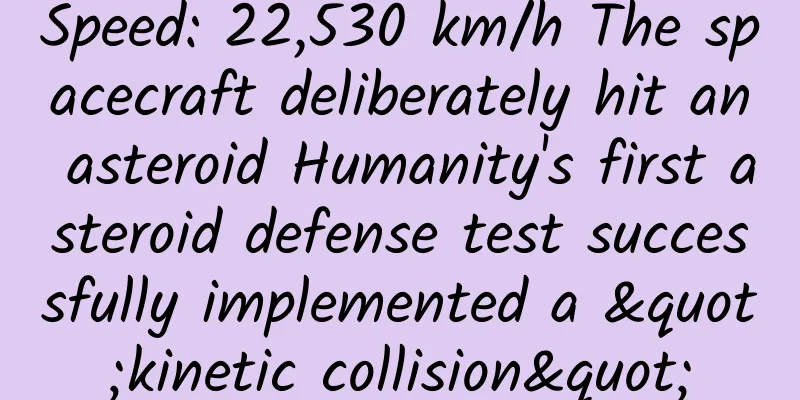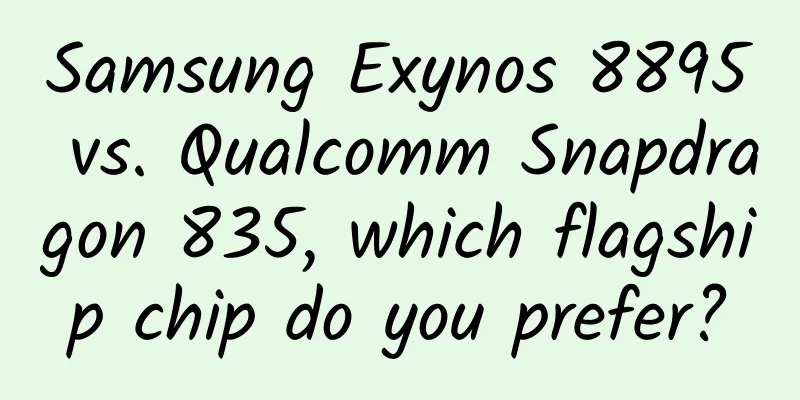Is there a lot of "junk" above our heads? The problem of space debris cannot be ignored

|
About two weeks ago, the astronauts who were sleeping in the International Space Station were suddenly awakened by the ground control center. They hurriedly put on their space suits, entered the shelter according to the safety procedures, and closed some important hatches. Shortly before that, an anti-satellite missile was launched from a Russian launch site, and a few minutes later, it intercepted the Russian satellite Kosmos 1408, which had been decommissioned for decades. The collision produced more than 1,500 traceable satellite fragments, but it is estimated that there are hundreds of thousands of difficult-to-track fragments. Afterwards, space software company AGI created a GIF that simulated how Kosmos 1408 instantly became a "debris nebula" scattered in low-Earth orbit. AGI simulation GIF丨AGI The fragments after the disintegration were scattered in space orbits between 300-700 kilometers from the ground. Some of the fragments only missed the International Space Station by 40 kilometers, and the seven astronauts stationed on the station escaped. Once an accident occurs, the consequences can be compared to the space disaster movie "Gravity". If the space station is damaged by debris, the crew will almost have to leave the space station in an emergency and return to Earth on the Soyuz MS-19 or the manned Dragon spacecraft, just like in the movie. "Outrageous" and "unconscionable", NASA Administrator Bill Nelson accused the test led by the Russian military in front of the media. The International Space Station was "lucky" to escape this time, but the impact and crisis brought by space debris are always long-term. Just a week ago, the International Space Station had just carried out an emergency orbit change operation - multiple thrusters ejected for 6 minutes to raise the orbit by 1.1 kilometers in order to avoid the debris of another weather satellite that was destroyed 14 years ago. Satellite expert Jonathan McDowell believes that the disintegration of Kosmos 1408 is likely to have pressed the next "danger switch." Of course, the space station and astronauts are learning to get along with the increasingly "unsafe" space environment. The premise is that it can predict when danger is coming. Our heads are covered with garbage The story begins with the space race between the US and the Soviet Union. In 1961, Gagarin looked down at the Earth from space, and Kennedy, deeply inspired, made a bold statement to beat the Soviet Union to the moon within ten years. Before that, there were only about 50 man-made objects wandering in the near-Earth space orbit. From the 1960s to the 1980s, the Soviet Union and the United States took turns conducting anti-satellite tests. In less than 20 years, the former Soviet Union alone produced 700 recorded fragments (debris) in 20 tests. Such frequent explosion tests caused international condemnation. In the following days, anti-satellite tests finally stopped. But people also found that satellites would accidentally collide with each other, and the risk of space debris was equally serious. Space debris formation | Giphy The first recorded satellite collision occurred in 1991, when the retired Russian navigation satellite Cosmos 1934 was broken in half by a fragment of its sister satellite Cosmos 926 - a "quiet" version of a collision. A more dramatic one occurred in 2009, when the US communications satellite Iridium 33 collided with the retired Russian satellite Cosmos 2251, with as many as 1,740 fragments identified within a year - the first hypervelocity collision between artificial satellites, with a collision speed of 11.7 km/s. After the satellite collision, the amount of space debris also reached a "peak". Immediately afterwards, the "Space Debris Mitigation Guidelines" adopted by the United Nations Outer Space Affairs Committee emphasized several implementation principles: spacecraft in orbit cannot stay in LEO (low Earth orbit) for a long time after completing their mission, and they must avoid hurting people when they fall into the atmosphere from orbit; and if the spacecraft is near GEO (geosynchronous orbit), the way to prevent the impact of future explosions is to push it into a higher "graveyard orbit" after retirement. Most space debris is distributed in the low-Earth orbit. Due to gravity and air resistance, space debris below 500 kilometers is more likely to fall into the atmosphere and burn up during the fall. In the geostationary synchronous orbit where communication satellites gather, because it meets the 0-degree orbital inclination and 36,000-kilometer orbital altitude, it is relatively stationary with the earth. Once space debris is generated here, it will be extremely difficult for it to "disappear naturally". The "graveyard orbit" above 50 kilometers will become the final destination of this part of space debris. It is no longer appropriate to describe the space orbit as "empty". According to public data, as of July 2016, there were 1,419 satellites in operation. Three years later, this number increased to 2,218. However, along with it, there are also rocket second stages, spacecraft debris, scrapped satellites, and work and life garbage that astronauts accidentally throw away. The number of man-made objects that can be tracked wandering above our heads has increased from 18,000 to 20,000 (recorded). Spacecraft disintegrated and became space junk丨Giphy The development of commercial space in recent years has further exacerbated the congestion. Not all astronomers are praising Elon Musk for bringing down the cost of rocket launches by an order of magnitude. What keeps them up at night is Musk's "Starlink" - a constellation of Internet service satellites that may eventually reach 42,000, spread across orbits at different altitudes ranging from 330 to 1,300 kilometers. In recent years, Musk has sent 1,892 satellites into space, exceeding the number of all artificial satellites in space before Starlink. What's more, in early launches, McDowell calculated that the scrap rate of Starlink satellites was 3%. In April this year, when SpaceX carried out its second commercial manned launch, the four astronauts who were about to fall asleep were suddenly awakened and told that the Dragon spacecraft was about to collide with a piece of space debris. Fortunately, a "successful avoidance" signal was sent from the ground control center later. Early warning cannot solve all problems, because some space debris is so small that even if it flies right in front of you, you won't have time to react. The US Department of Defense has a catalog that records 27,000 pieces of space debris with a diameter greater than 10 cm that can be tracked by the SSN (Space Surveillance Network); an estimated 500,000 pieces of debris between 1 and 10 cm; and more than 100 million pieces between 1 mm and 1 cm. 10 cm is a cutoff value, and for space debris larger than this, it is effective to conduct a merge and collision assessment. The increasingly crowded space orbit丨Giphy Small pieces of trash that cannot be tracked pose a greater potential risk. In the 1960s, scientists invented the "Light-Gas Gun," a device that simulates orbital speed. When a projectile weighing only 7 grams and made of polycarbonate collides with an aluminum block at 7 kilometers per second, it immediately "explodes" a crater five times wider and five times deeper than its own size. Because of the space debris that cannot be avoided at all, the International Space Station is covered with a Whipple Shield - this hypervelocity impact protection structure for spacecraft was invented by astronomer Fred Lawrence Whipple in the 1940s. According to former space station commander Chris Hadfield, "If you stay quietly in the space station, you don't hear 'bang bang' sounds every day, but they are quite common." Hadfield once posted a photo on his Twitter showing a small hole in the space station's solar panel, which was most likely caused by tiny "space junk." Bullet hole as mentioned by Chris Hadfield | Twitter Garbage collector Four months after the "encounter" between Iridium 33 and Cosmos 2251, the debris from the "passionate collision" almost covered the entire orbit they had been in. People once again began to take seriously the theoretical hypothesis proposed by Donald Kessler in 1978 - when the density of objects in low-Earth orbit reaches a critical point, the debris formed by a collision may cause more collisions, forming a cascade effect. Once this happens, the Earth's orbit will be filled with garbage, which may prevent humans from conducting normal space exploration in the next few hundred years. There is another reason to make things serious. The proportion of such space debris that can be "naturally digested" is much lower than people think. After an anti-satellite test in 2007, the number of debris generated increased to 2,800 in 2010 and more than 3,000 in 2014, but less than 10% of them were naturally deorbited and burned. It's like speeding on a highway that is getting more and more crowded with cars. There are more and more people creating problems, but fortunately, people who can solve them are also beginning to appear. Apple co-founder Steve Wozniak announced his new startup Privateer Space this year. When asked why he started a "space company", he said: Space is becoming more and more crowded. When companies like SpaceX launch satellites, they may want to ask us for a "Google Map" of space. Surveying and mapping the space is the first step to more effective cleaning and monitoring. Privateer has been approved for two launches, which will be carried out in February and April 2022 respectively. Privateer uses 3D printing technology to make the chassis of the satellite, using titanium alloy with excellent strength and weight ratio to make the chassis. This allows the satellite to carry heavier sensors, batteries and other equipment. Privateer hopes to first know how much space junk we have to clean up and where they are. Wozniak has not yet announced the final "technical implementation roadmap", but Privateer has already begun working with another space debris cleaning company, Astroscale. In March this year, Astroscale's "technology verification satellite" ELSA-d was launched from the Baikonur Cosmodrome with a 180 kg catcher and 20 kg of simulated space debris. Astroscale Demo丨Astroscale Official Website The space junk is in a state of constant rotation and cannot be communicated with. The catcher is equipped with optical sensors, which have the functions of searching, tracking, locating and inspecting, and the simulated space junk comes with a magnetic docking component - what will be verified in the end is whether the catcher can find the right time to absorb the simulated junk and drag it into the atmosphere to burn when the catcher and the simulated junk are far apart. In November this year, Nature magazine published a technology invented by Jake J. Abbott, a professor at the University of Utah, which was implemented in a similar way to Astroscale's solution - using rotating magnets to move non-magnetized metal bodies. When metal fragments are subjected to a changing magnetic field, the internal electrons will move in a circular motion, generating torque and force. Abbott said that the rotating magnet solution can circumvent a defect of the contact robot arm solution - if the space debris rotates too fast or loses control, it will break the robot arm and generate more debris. Less than a month after the launch of Japan's Astroscale, a Chinese commercial space company called "Origin Space" launched a "space mining robot" and said that its recycling technology can also be used to clean up space debris. According to its promotional video, this cleaning method is like "fishing with a fishing net." JAXA (Japan Aerospace Exploration Agency) has used a similar method. In 2016, a 700-meter-long "fishing net" made of stainless steel and aluminum was launched on a cargo ship bound for the International Space Station. When the ship returned to Earth, it was released, forcing the movement speed of space debris to slow down through electromagnetic effects, so that it would fall into the atmosphere-the mission failed because the release system failed. In "Wall-E," the scene in which Wall-E and Eva have to drill through a thick layer of space junk when they rush out of the Earth in their spacecraft is not so far away from us. Therefore, even though the business progress of all the companies involved is still in the verification stage, government agencies can't wait to start issuing orders. ESA gave ClearSpace its first space junk cleaning order ($102 million) to clean up the satellite bracket left in space when the Vega launch vehicle launched a satellite in 2013. ClearSpace will launch a spacecraft in 2025, and the robotic arm will capture the bracket in an 800km Earth orbit, drag it into the atmosphere and burn it together. ClearSpace mission丨wikipedia In the eyes of another group of "conservatives", active intervention is not a good solution. According to a rough calculation by Zhihu user @ZX Huo, who is certified as an associate researcher at the Qian Xuesen Space Technology Laboratory, a satellite has to "wander" for an average of 1,000 years before it has a chance to collide with a 10cm-level space debris. Although this is data from five years ago, even today, the probability of a spacecraft colliding with space debris during its normal life is extremely small. Conservatives are worried that if satellites are launched to clean up garbage, more garbage may be created. In their view, "close monitoring, early warning, and mutual avoidance" are the best ways to avoid adding extra burdens. Every year, the European Space Agency "announces" and "notifies and criticizes" satellites that have not attempted to enter or failed to enter the graveyard orbit. The common problem that conservatives and activists cannot avoid is that the process of cleaning up space debris is slow, but the growth rate is explosive. According to the prediction of the Kessler effect, one day, when there are enough objects in the Earth's orbit, catastrophic chain collisions will be inevitable. But no one knows exactly how much is enough. References [1]https://gizmodo.com/a-history-of-garbage-in-space-1572783046 [2]https://en.wikipedia.org/wiki/Space_debris [3]https://www.zhihu.com/question/50794838 [4]https://marketresearchtelecast.com/steve-wozniaks-company-which-seeks-to-be-the-google-maps-of-space-will-launch-its-own-satellites-to-study-and-map-space-debris/207413/ [5]https://m.huxiu.com/article/356915.html?f=app_ios_friends Author: Shen Zhihan Steed also contributed to this article Editor: Lying insect This article comes from Guokr and may not be reproduced without permission. |
Recommend
The system's housekeeper - SystemServer process
[[374543]] This article is reprinted from the WeC...
Reduce the risk of cancer, diabetes and death... The benefits of men doing housework are beyond your imagination
Reviewer of this article: Chen Haixu, Deputy Dire...
What to do if your computer becomes slow after long-term use? Experienced drivers will teach you a few tricks
In modern society, computers are closely related ...
What improvements would you like to see on the 2019 iPhone?
In 2017, Apple first launched the iPhone X with a...
What are the channels for online promotion of educational institutions in Chengdu?
The Internet has been developed for more than 20 ...
2022 Taobao Live 618 Event Guide!
618 is approaching, and various platforms have be...
Xbox One becomes the only compliant set-top box whose cheese is moved by the serial number regulation?
Regarding the issue of whether Internet TV set-to...
How to carry out brand promotion on Bilibili?
Bilibili is facing the new generation of young pe...
A man developed a blood clot while riding a 6-hour train. Be careful of these diseases when traveling during the Spring Festival travel rush
China Science and Technology News, January 12 (Ji...
Why Android is better than iOS? The open and free Android is more powerful.
When buying an Android phone, users actually have...
How difficult is it to prevent floods in the Yangtze River?
↑A group of National Geographic fans, focusing on...
Analysis of JD Finance’s private domain operations!
Regarding the financial industry's approach t...
Will a credit card limit reduction affect my credit report? The situation is as follows
Will a credit card limit reduction be reflected i...
High blood sugar, high blood lipids... A 24-year-old boy was diagnosed with "milky blood". Pay attention to these habits!
Xiao Liu, 24, discovered that his blood sugar was...
Even spilled water can be collected: from sewage to recycled water, "quenching the thirst" of the city!
Guangdong has abundant water resources and is a t...









